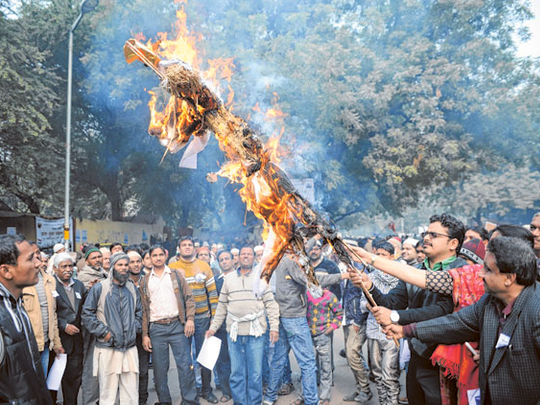
New Delhi: The sixth accused in the Delhi gang rape of the 23-year-old girl will be produced in the court for juveniles on January 15. The principal of the school in which the accused studied, has also been summoned to verify the age of the student.
The Juvenile Justice Board has asked the principal to furnish authentic documents, which can assist them in ascertaining the juvenile’s age.
The Delhi Police had earlier moved an application before the Board for the Ossification (Bone) Test of the accused to confirm his age. Resident of Badaun district in Uttar Pradesh, the minor used to study in a school there and claims to be 17-years-old.
“His school records will be crucial,” an investigator said.
“He is known to have beaten the girl on her face, abdomen and private parts with an iron rod and his shoe. And despite everything, he seems to have no remorse,” he said.
The iron rod used to beat the paramedic student had caused irreparable damage and resulted in the death of the victim.
Meanwhile, experts claim that bone density test can only estimate and not verify the accurate age.
Dr Harsh Mahajan, president of the Indian Radiology Association says, “We can only give the age within a range of two to three years. Giving the exact age is not possible.”
Similarly, forensic expert Dr Sreenivasan claims, “When a person is young, within the growing age group, age determination is possible with a fair degree of accuracy within the parameters, but we can only give a range that varies between one and two years, mentioning the possible lower and upper age limits depending on our analysis, for example between 15 to 16 or 17 to 19.”
Activists argue that instead of prescribing a minimum age, what should be considered is the criminal bent of mind and the intention of the accused to commit the offence.
The demand is becoming fierce as rapes by minors have risen five fold in a decade since 2000 when its definition was modified to include children of 16 to 18 under the category.
The year 2011 recorded 1,149 rapes by juveniles — most of them between 16 to 18 years, whereas in 2000, the number was only 198.
As per the modified Juvenile Justice Act, the maximum punishment for a crime committed by a juvenile is three years, as compared to imprisonment of up to life for the same offence committed by an adult.
It was in accordance with the United Nations child convention that the Indian government had, in 2000, brought children between 16 to 18 years under the protection of law, which offers them the opportunity to reform.
However after the brutal gang-rape case, the demand that juveniles be punished like adults for heinous crimes has risen.












